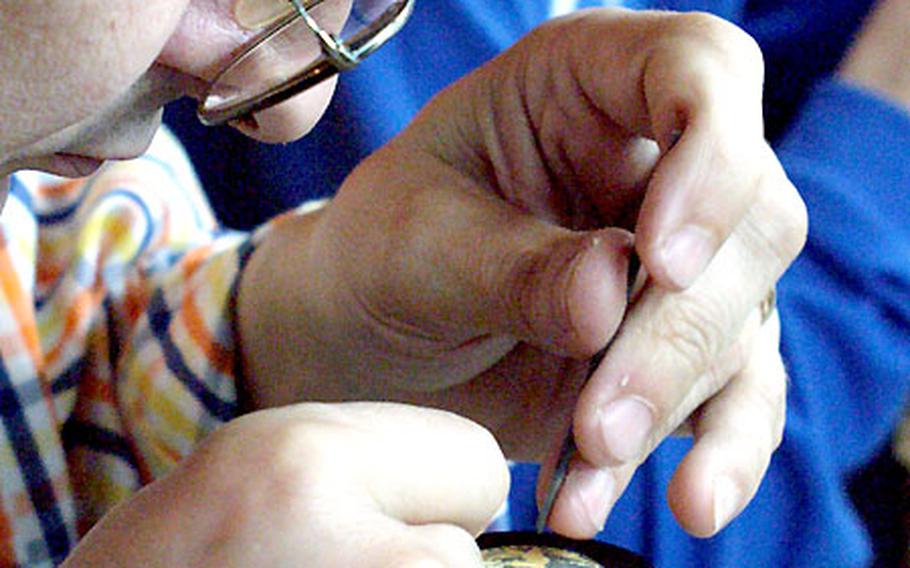
Eldefonso Suarez creates a piece of damascene handicraft at Fabrica Bermejo in Toledo, Spain. The damascene procedure requires creativity and the steady hand of a surgeon on small pieces. (Scott Schonauer / S&S)
In addition to its swords, Toledo is renowned for its damasquinados, or damascene handicrafts and costume jewelry. Damascening is the Moorish art of inlaying gold or silver threads into black steel in a decorative pattern. The skill is used to decorate plates, earrings, bracelets and large pendants.
At the Fabrica Bermejo damasquinado shop in Toledo, customers and passers-by can watch craftsmen use hammers and instruments as small as needles to create their designs or picturesque scenes. It is where Eldefonso Suarez and his teenage son work side-by-side crafting their beautiful work.
“It’s an art,” salesman Antonio Simian Fernandez says. “The gold is gold. But the work is more important than the gold.”
The damascene procedure requires creativity and the steady hand of a surgeon on small pieces. Artisans first use sharp tools to scratch the pattern into the black steel.
They then push the gold or silver threads into the grooves and use a hammer to make sure the threads stay in place.
How long it takes to finish depends on the size of the item and the detail of the design or picture.
The cost of damascene work depends largely on whether the item is made by hand or machine. Machine-made damascene — in which the etching and hammering is done by machine — is not as expensive.
A small handmade plate about the size of a salad dish can cost more than $1,000, while a similar machine-made one can cost as much as 50- percent less.
The amount of effort put into the item or the intricacy of the design also can increase the value.
The art of damascening has been around for centuries. The Egyptians, Greeks and Romans are known to have practiced it. Around the15th century, it grew in popularity in Europe and came to prominence in Toledo.
Like swords, it is hard to pass a souvenir shop or gallery without finding the shiny, gold plates and jewelry.